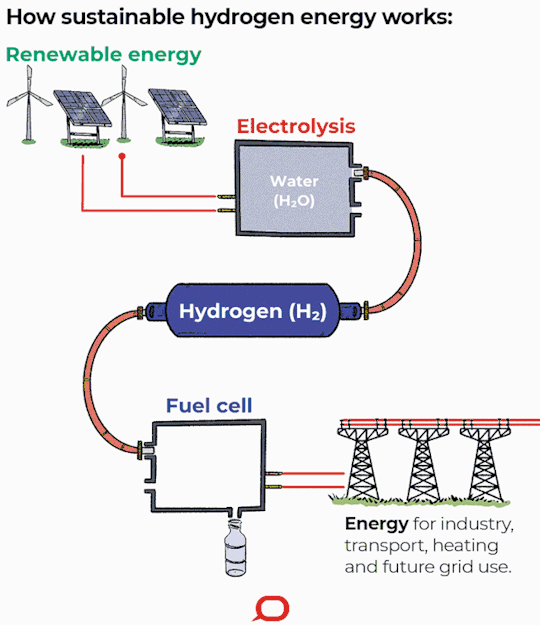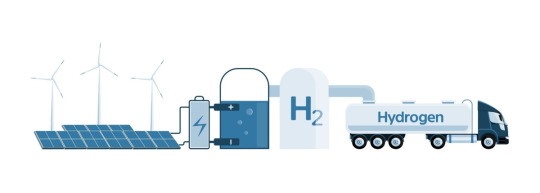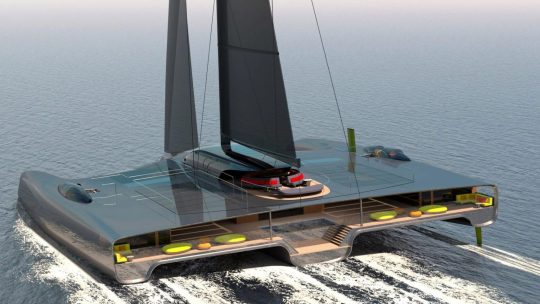#hydrogen fuel cells
Explore tagged Tumblr posts
Text
#Tags:Advanced Drone Technology#Alien Technology Theories#FAA Regulations#facts#Government Secrecy#Hidden Technology#High-Tech Drones#Hydrogen Fuel Cells#life#Long-Endurance Drones#Military Black Projects#New Jersey Drone Mystery#Podcast#Restricted Airspace#serious#Solar-Powered Drones#straight forward#Surveillance Drones#truth#UAV Surveillance#Unexplained Aerial Phenomena#upfront#website
3 notes
·
View notes
Text
Hydrogen Cars
About 20 years ago, the government of the West Coast of North America:
British Columbia
Washington (state)
Oregon
California
Were working on a "Hydrogen Highway". This was a series of hydrogen fuelling stations up and down the West Coast, to fuel Hydrogen Fuel Cell vehicles. Hydrogen Fuel Cells combine Hydrogen and Oxygen together to produce electricity, (and water). We can use atmospheric oxygen, which means we just needed hydrogen.
Hydrogen is energy inefficient to produce from water, and difficult to store. But, we still had hydrogen buses, and Arnold Schwarzenegger had a Hydrogen Hummer. Life was good.
And then it turned out that the politicians didn't care about it, and dropped it like a sack of hammers.
But, technology carried on, and we now have mechanical converters that can turn natural gas (methane) into hydrogen in an incredibly efficient manner. Hyundai and Toyota both have commercial hydrogen-powered cars.
There was even a group that created a tube system that could grow algae with water/air, and have this algae produce methane.
Another great source of methane is waste off-gassing. Normally garbage dumps, but this would also apply to compost.
So, farmers could use their own compost heaps to produce methane, which can be used to produce nitrogen fertilizer, along with hydrogen for fuel cells.
Ruminants also produce methane with farts, (the controversial cow-fart ban the governments are trying to do... for the environment...). So, animal produce farms can have atmospheric miners, (fractional distillation), to capture the cow farts.
So, we have engines that can run on cow farts.
The biggest problem is a chicken and egg problem. We cannot have mainstream adoption until we mainstream access.
Do hydrogen fuel cells have problems? Of course. But the problems are far less than what electric cars have.
3 notes
·
View notes
Text
The global Blue Ammonia Market is projected to grow from USD 78 million in 2023 to USD 7,664 million by 2030, at a CAGR of 62.3% according to a new report by MarketsandMarkets™. Blue ammonia is a type of ammonia that is produced using natural gas as a feedstock, but with the carbon dioxide emissions from the production process captured and stored. This makes blue ammonia a lower-carbon alternative to traditional ammonia production, which releases large amounts of greenhouse gases into the atmosphere. Growing focus on reducing greenhouse gas emissions and increasing efforts toward empowering hydrogen economy will drive the demand for blue ammonia market.
#blue ammonia#blue ammonia market#hydrogene#hydrogen fuel cell vehicle#renewable hydrogen#hydrogen fuel cells#hydrogen#energy#energia#power generation#utilities#power#utility#renewableenergy#renewable power#renewable resources#green hydrogen#hydrogeneconomy#hydrogen economy#renewable energy
0 notes
Text
𝐏𝐨𝐰𝐞𝐫𝐢𝐧𝐠 𝐓𝐨𝐦𝐨𝐫𝐫𝐨𝐰: 𝐇𝐲𝐝𝐫𝐨𝐠𝐞𝐧 𝐒𝐭𝐨𝐫𝐚𝐠𝐞 𝐈𝐧𝐧𝐨𝐯𝐚𝐭𝐢𝐨𝐧𝐬 𝐟𝐨𝐫 𝐚 𝐒𝐮𝐬𝐭𝐚𝐢𝐧𝐚𝐛𝐥𝐞 𝐅𝐮𝐭𝐮𝐫𝐞
The hydrogen energy storage market size was estimated at USD 15.97 billion in 2023 and is expected to grow at a compound annual growth rate (CAGR) of 4.5% from 2024 to 2030.

Inquiry Before Buying
𝐂𝐨𝐦𝐩𝐫𝐞𝐬𝐬𝐞𝐝 𝐇𝐲𝐝𝐫𝐨𝐠𝐞𝐧 : Hydrogen gas is compressed under high pressure in tanks. This method is commonly used due to its simplicity and relatively low cost.
𝐋𝐢𝐪𝐮𝐢𝐝 𝐇𝐲𝐝𝐫𝐨𝐠𝐞𝐧 : Hydrogen can be cooled to extremely low #temperatures (around -253°C) to become a #liquid. This method allows for higher energy density but requires specialized cryogenic storage tanks.
𝐌𝐞𝐭𝐚𝐥 𝐇𝐲𝐝𝐫𝐢𝐝𝐞𝐬 : Hydrogen can be stored in solid form by binding it with certain #metals to form metal hydrides. This method is safer and more compact but often involves more complex materials and costs.
𝐃𝐨𝐰𝐧𝐥𝐨𝐚𝐝 𝐒𝐚𝐦𝐩𝐥𝐞
𝐀𝐝𝐬𝐨𝐫𝐩𝐭𝐢𝐨𝐧: Hydrogen gas can be stored on the surface of materials like activated carbon or metal-#organic frameworks (MOFs). This method is still under #research but offers potential for efficient storage.
𝐄𝐧𝐞𝐫𝐠𝐲 𝐒𝐭𝐨𝐫𝐚𝐠𝐞⚡ : Hydrogen stores excess renewable energy for later use, helping balance energy supply and #demand.
𝐅𝐮𝐞𝐥 𝐂𝐞𝐥𝐥𝐬🔋 : Used in fuel cells to generate #electricity for #vehicles and stationary power systems.
Buy Now
𝐓𝐫𝐚𝐧𝐬𝐩𝐨𝐫𝐭𝐚𝐭𝐢𝐨𝐧🚗 : Powers hydrogen fuel cell vehicles (FCVs), offering a clean alternative to fossil fuels.
𝐈𝐧𝐝𝐮𝐬𝐭𝐫𝐢𝐚𝐥 𝐀𝐩𝐩𝐥𝐢𝐜𝐚𝐭𝐢𝐨𝐧𝐬🏭 : Utilized in processes like refining #petroleum and producing ammonia for fertilizers.
𝐇𝐞𝐚𝐭𝐢𝐧𝐠🔥 : Can be blended with natural gas for heating or used in hydrogen-specific heating systems.
𝐀𝐯𝐢𝐚𝐭𝐢𝐨𝐧 𝐚𝐧𝐝 𝐒𝐡𝐢𝐩𝐩𝐢𝐧𝐠🚢 : Explored as a fuel source for aviation and maritime transport, reducing emissions.
𝐆𝐫𝐢𝐝 𝐒𝐭𝐚𝐛𝐢𝐥𝐢𝐭𝐲⚙️ : Hydrogen storage systems help stabilize electrical grids, providing backup power.
𝐏𝐨𝐰𝐞𝐫-𝐭𝐨-𝐗 𝐀𝐩𝐩𝐥𝐢𝐜𝐚𝐭𝐢𝐨𝐧𝐬🔄 : Converts hydrogen into other fuels or #chemicals, enhancing energy versatility.
𝐓𝐨𝐩 𝐊𝐞𝐲 𝐏𝐥𝐚𝐲𝐞𝐫𝐬 :
Hydrogen Europe
Hydrogen Fuel Cell Partnership
Bosch Hydrogen Energy
Nel Hydrogen
HYPHEN Hydrogen Energy
ENEOS-Hydrogen
Hyundai Commercial Vehicle and Hydrogen Business
Chiyoda Corporation-Hydrogen Business
#Hydrogen Storage#hydrogen water machine#hydrogen gas generator#hydrogen fuel cells#marketing#reseach marketing
0 notes
Text
youtube
We attempt to cross California in a car powered entirely by hydrogen gas, a Fuel Cell Electric Vehicle (FCEV). Along the way, we meet other early adopters of this tech, and find out why the world seems to be choosing battery electric cars over hydrogen.
1 note
·
View note
Text
Hydrogen vs. Batteries: Why Lithium Reigns Supreme (for Now) in Electric Vehicles
The dream of clean transportation powered by hydrogen fuel cells seems straightforward: burn clean fuel made from water. However, a closer look reveals significant energy losses throughout the hydrogen life cycle, making it less efficient than lithium-ion batteries, the current leader in electric vehicles (EVs). The Energy Drain of Hydrogen Production: Separating hydrogen from water…

View On WordPress
#Battery Charging Infrastructure#Clean Transportation#Electric vehicles (EVs)#Energy Efficiency#Future of Transportation#Hydrogen Fuel Cells#Hydrogen Production#Lithium-Ion Batteries#Sustainability
0 notes
Text
The global Blue Hydrogen Market is projected to grow from USD 18.2 billion in 2022 to USD 44.5 billion by 2030, at a CAGR of 11.9% according to a new report by MarketsandMarkets™.
#blue hydrogen market#energy#power#power generation#utilities#renewable energy#renewable#hydrogen#hydrogen fuel#hydrogen car#hydrogen fuel cells#hydrogen production#hydrogen storage#hydrogen economy#hydrogen fuel companies#hydrogen fueling technology#hydrogen energy storage market
0 notes
Text
Figure 12.36 illustrates an early design of a hydrogen-oxygen fuel cell.

"Chemistry" 2e - Blackman, A., Bottle, S., Schmid, S., Mocerino, M., Wille, U.
#book quotes#chemistry#nonfiction#textbook#fuel cell#hydrogen fuel cells#hydrogen oxygen fuel cell#hydrogen#oxygen
0 notes
Text
Investing in Hydrogen: Trends in Technology, Infrastructure, and Policy
As the world races to combat climate change and transition towards cleaner energy sources, hydrogen has emerged as a promising contender in reshaping the energy landscape. The concept of a hydrogen economy, driven by the production and utilization of hydrogen gas, has gained momentum, with a focus on both its potential benefits and the challenges that lie ahead. This article delves into various…

View On WordPress
#Green Energy Transition#Green Hydrogen#green hydrogen economy#Green Hydrogen Projects#Hydrogen#Hydrogen Business#Hydrogen Business Environment#Hydrogen Economic Landscape#Hydrogen Economic Trends#Hydrogen Economics#Hydrogen Economy#Hydrogen Financial System#Hydrogen Fuel Cells#Hydrogen Future#Hydrogen Industry#Hydrogen Industry Outlook#Hydrogen Infrastructure#Hydrogen Market#Hydrogen Market Dynamics#Hydrogen Opportunity#Hydrogen Potential#Hydrogen Production#Hydrogen Production Cost Analysis#Hydrogen Sector#Hydrogen Storage#hydrogen storage solutions#Hydrogen Trade#Hydrogen Trends#Renewable Energy#Zero-Emission Hydrogen
0 notes
Link
#market research future#hydrogen fuel cells market#hydrogen fuel cells#hydrogen fuel cells market cap#hydrogen market size
0 notes
Text
Hydrogen Fuel Cell Technology: A Journey from Concept to Reality
The concept of hydrogen fuel cell technology has been around for centuries, but it's only in recent years that this technology has started to gain widespread attention. As the world moves towards a more sustainable future, hydrogen fuel cells are emerging as a key player in the energy sector, offering a number of advantages over traditional fossil fuels. In this blog, we'll take a look at the history of hydrogen fuel cell technology, its current status, and the potential it holds for the future of energy storage and emerging technologies.
The first recorded idea of a hydrogen fuel cell can be traced back to 1839, when British scientist William Grove first demonstrated the basic principles of fuel cell technology. However, it wasn't until the mid-20th century that the technology started to gain traction. In the 1950s, the first practical hydrogen fuel cell was developed, and since then, significant advancements have been made in the design, materials, and efficiency of these cells.
Today, hydrogen fuel cell technology has come a long way and is being widely used in various applications, including transportation, stationary power generation, and energy storage. In the transportation sector, hydrogen fuel cells are being used to power vehicles, including cars, buses, and even trains. These vehicles offer a clean and efficient alternative to traditional fossil fuel-powered vehicles, emitting only water vapor as a by-product.
In the field of energy storage, hydrogen fuel cell technology offers a number of advantages over traditional battery storage solutions. Unlike batteries, which require frequent charging and have limited lifespan, hydrogen fuel cells can store energy for longer periods and can be refueled in a matter of minutes. This makes them an ideal solution for large-scale energy storage, particularly for renewable energy sources such as wind and solar.
In addition to its use in energy storage and transportation, hydrogen fuel cell technology is also being considered as a potential solution for other emerging technologies. For example, hydrogen fuel cells are being used in the development of fuel cell-powered drones and underwater vehicles, where they offer a clean and efficient alternative to traditional power sources.
Despite its potential, there are still some challenges that need to be addressed in the development and deployment of hydrogen fuel cell technology. One of the biggest challenges is the lack of hydrogen refueling infrastructure, which makes it difficult for hydrogen fuel cell vehicles to compete with traditional fossil fuel vehicles. Another challenge is the cost of producing hydrogen, which is currently more expensive than producing fossil fuels. However, as the technology continues to develop and production processes become more efficient, it's likely that the cost of hydrogen production will decrease.
Conclusion
Hydrogen fuel cell technology has come a long way since its early days, and its potential for the future of energy storage and emerging technologies is vast. While there are still some challenges to be addressed, the development and deployment of hydrogen fuel cell technology is a key step towards a more sustainable future, offering a clean and efficient alternative to traditional fossil fuels.
#hydrotec fuel cell technology#hydrogen storage news#sciencetech#latest news on hydrogen#hydrogen fuel cells#energy storage
0 notes
Photo

The Domus trimaran - the "world's first zero-emission superyacht"
Devised by yacht design studios Van Geest Design and Rob Doyle Design, the Domus superyacht would be powered by a combination of hydrogen fuel cells, hydro generation and solar energy.




#domus trimaran superyacht#future ship#zero-emission superyacht#van geest design#rob doyle design#yacht design studios#transportation#hydrogen fuel cells#hydro generation#solar energy
0 notes
Text






Pioneer 25 Prototype, 2024. A new Extreme H race car powered by a hydrogen fuel cell with a peak output of 400kW (550bhp). The Symbio fuel cell is has been engineered specifically to meet the demands of motor racing, Extreme H represents the first-ever testbed of hydrogen technology in motorsport. Each car in Extreme H features a standardised package of parts from Spark Racing Technology, while allowing teams the flexibility to customise areas such as the front and rear bodywork sections and lights.
#Pioneer 25#Extreme H#prototype#race car#Hydrogen Fuel Cell#2025#new cars#experimental car#test vehicle#electric race car#hydrogen#Spark Racing Technology
204 notes
·
View notes
Text
The global Hydrogen IC Engines Market size is expected to grow from USD 12 million in 2024 to USD 327 million by 2035, at a CAGR of 34.7% according to a new report by MarketsandMarkets™. Hydrogen IC engines occupy a crucial position in the ongoing global energy transition. It serves as a vital bridge between traditional fossil fuels and emerging renewable energy sources like wind and solar power. The global hydrogen IC engines market is anticipated to grow at a higher level. There are various drivers responsible for the growth of the market such as government policies and incentives and technological advancements among others. Existing ICE technologies can be adapted to run on hydrogen with modifications, leveraging established manufacturing and maintenance infrastructure, and reducing the development costs and time compared to completely new technologies.
Hydrogen IC engines offer a promising solution for reducing carbon footprints. When hydrogen is used as a fuel, it produces water vapor as its primary emission, drastically reducing the release of carbon dioxide and other harmful pollutants compared to traditional diesel or gasoline engines. This reduction in emissions aligns perfectly with corporate sustainability initiatives aimed at decreasing the environmental impact of their operations.
#hydrogen#hydrogeneconomy#Hydrogen IC Engines#hydrogen combustion engines#hydrogene#hydrogen technologies#hydrogen storage#hydrogen fuel cell#hydrogen fuel cell vehicle#hydrogen fuel cells#energy#energia#power generation#power#utilities#utility#renewable power#renewableenergy#renewable resources#hydrogen gas generator#hydrogen internal combustion engine#hydrogen energy#hydrogen vehicle#hydrogen vehicles#hydrogen car
0 notes
Note
Hydrogen Fuel Cell!!

#ifitwasediblewouldyoueatit#food poll#gimmick blog#poll#tumblr blog#polls#random polls#tumblr polls#poll time#hydrogen fuel cell
22 notes
·
View notes
Text

Supercharging fuel cells with caffeine
With global goals set on transitioning away from fossil fuels, fuel cells stand out as a promising carbon-free energy source. Comprising an anode and a cathode separated by an electrolyte, fuel cells convert the chemical energy of fuel directly into electricity. The anode receives the fuel, while an oxidant, typically oxygen from the air, is introduced at the cathode. In a hydrogen fuel cell, hydrogen undergoes oxidation at the anode, producing hydrogen ions and electrons. The ions move through the electrolyte to the cathode, and electrons flow through an external circuit, generating electricity. At the cathode, oxygen combines with the hydrogen ions and electrons, resulting in water as the sole byproduct.
Read more.
#Materials Science#Science#Fuel cells#Biomaterials#Caffeine#Hydrogen#Reactions#Platinum#Chiba University
29 notes
·
View notes